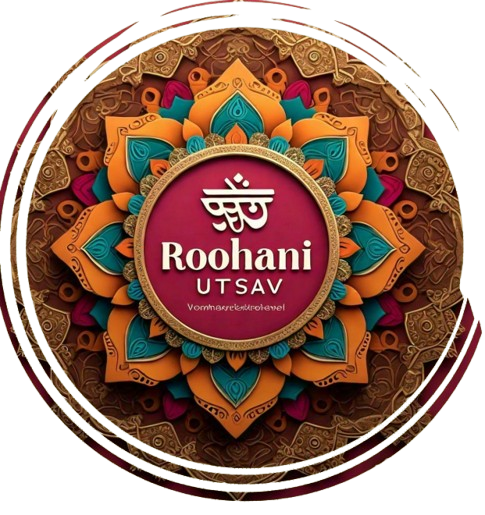Origin Of Cultural Dance
Indian dance, rooted in the Natya Shastra, reflects spirituality and culture. Bharatanatyam expresses devotion with grace, Kathak tells stories through spins and rhythm, Kathakali brings epics alive with vivid expressions, and Odissi mirrors temple art with fluid movements. Each dance celebrates India’s rich heritage and timeless artistry.
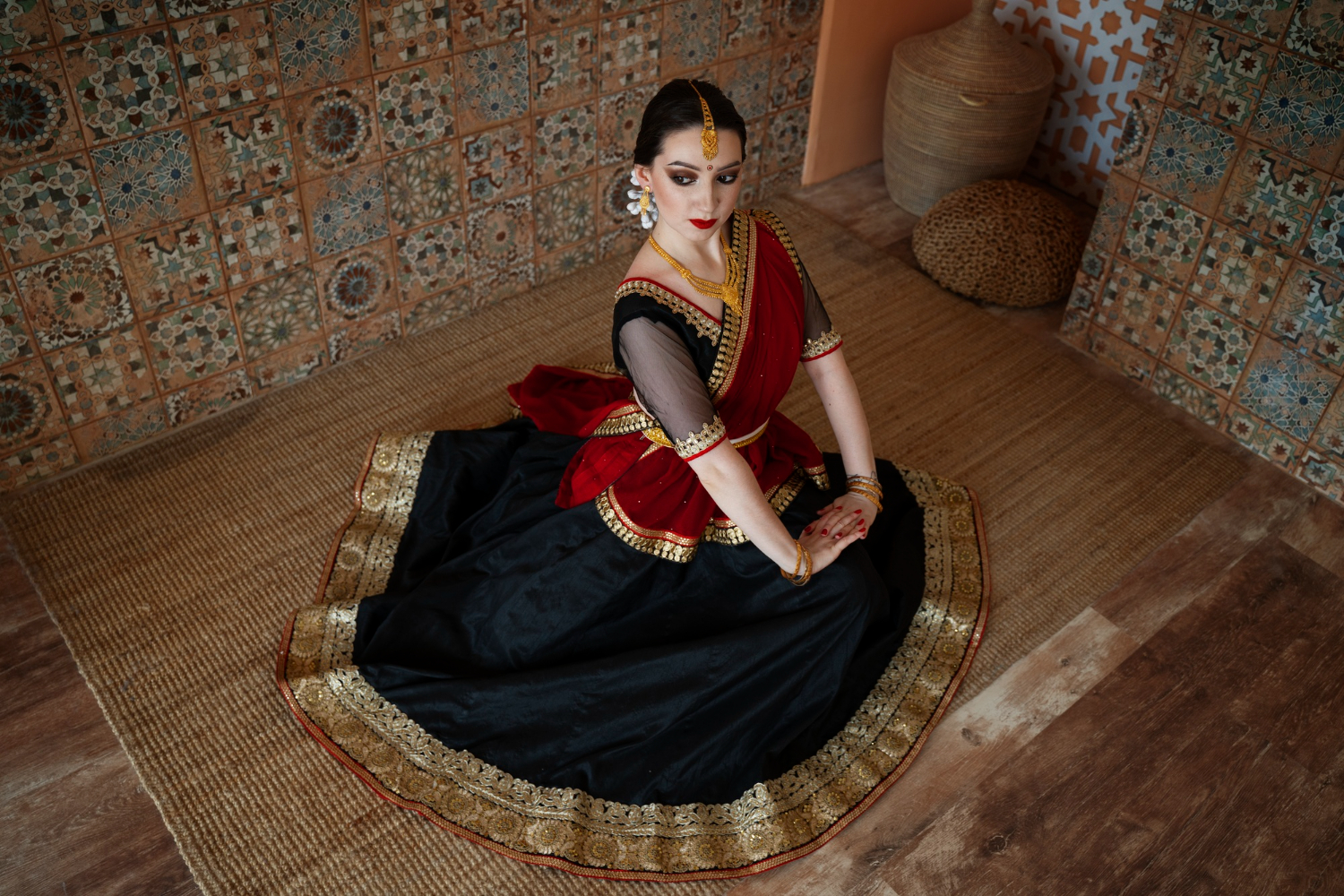
Kathak
Kathak, one of India’s classical dance forms, originated in the temples of North India. It began as a storytelling art, where "Kathakas" narrated tales of gods and epics through expressive movements and gestures. Over time, it evolved under Mughal influence, incorporating intricate footwork, graceful spins, and rhythmic compositions. Today, Kathak bridges devotion and artistry, celebrating its rich cultural roots.
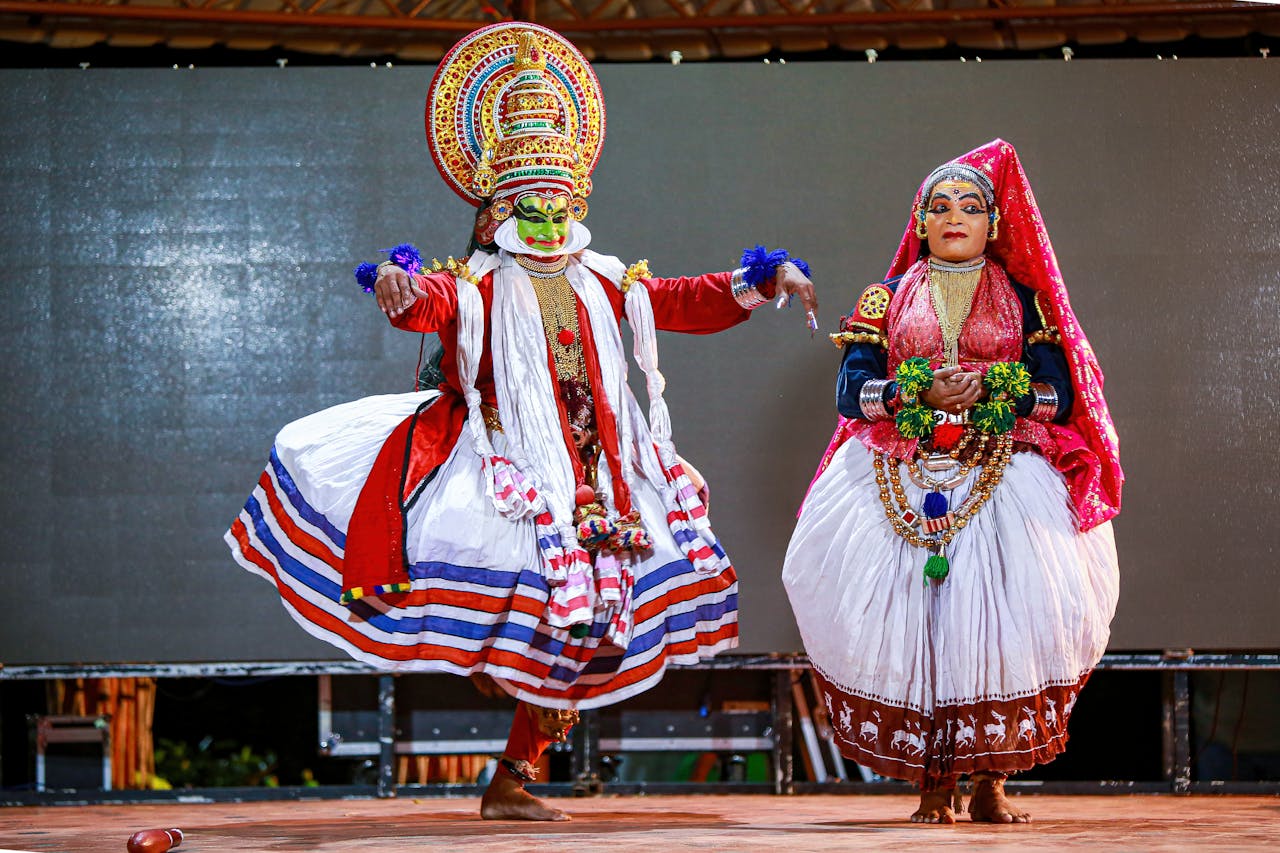
Kathakali
Kathakali, a classical dance-drama from Kerala, originated in the 17th century, drawing inspiration from temple rituals and ancient Sanskrit texts. Known for its elaborate costumes, vivid makeup, and expressive gestures, it brings epics like the Mahabharata and Ramayana to life. Rooted in devotion and storytelling, Kathakali is a vibrant reflection of Kerala's cultural and spiritual heritage.
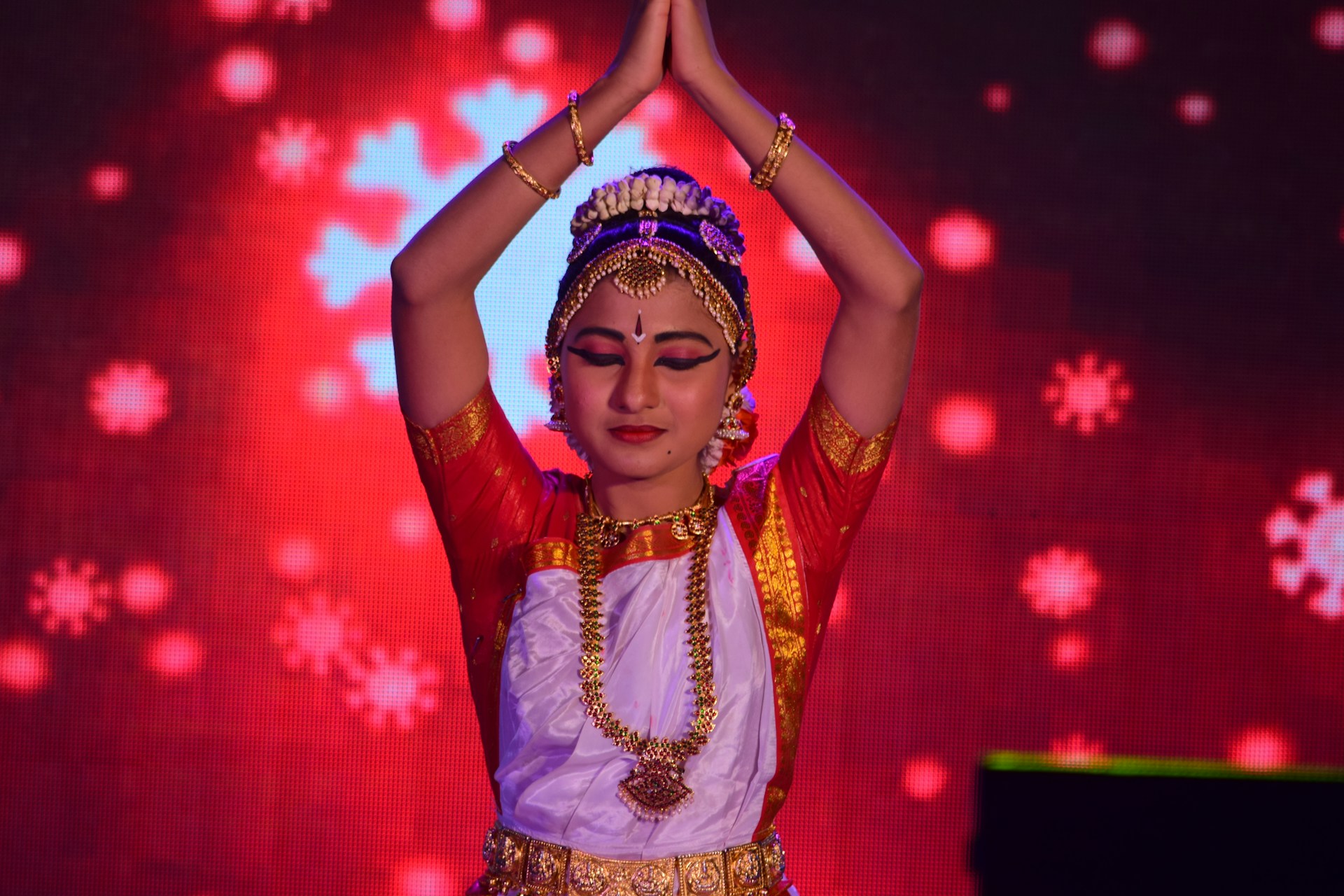
Bharatnatyam
Bharatanatyam, one of India’s oldest classical dance forms, originated in Tamil Nadu over 2,000 years ago. Rooted in temple rituals, it was performed as an offering to deities, blending expression, melody, and rhythm. Derived from the Natya Shastra, it embodies devotion, storytelling, and spiritual expression, making it a timeless cultural treasure.
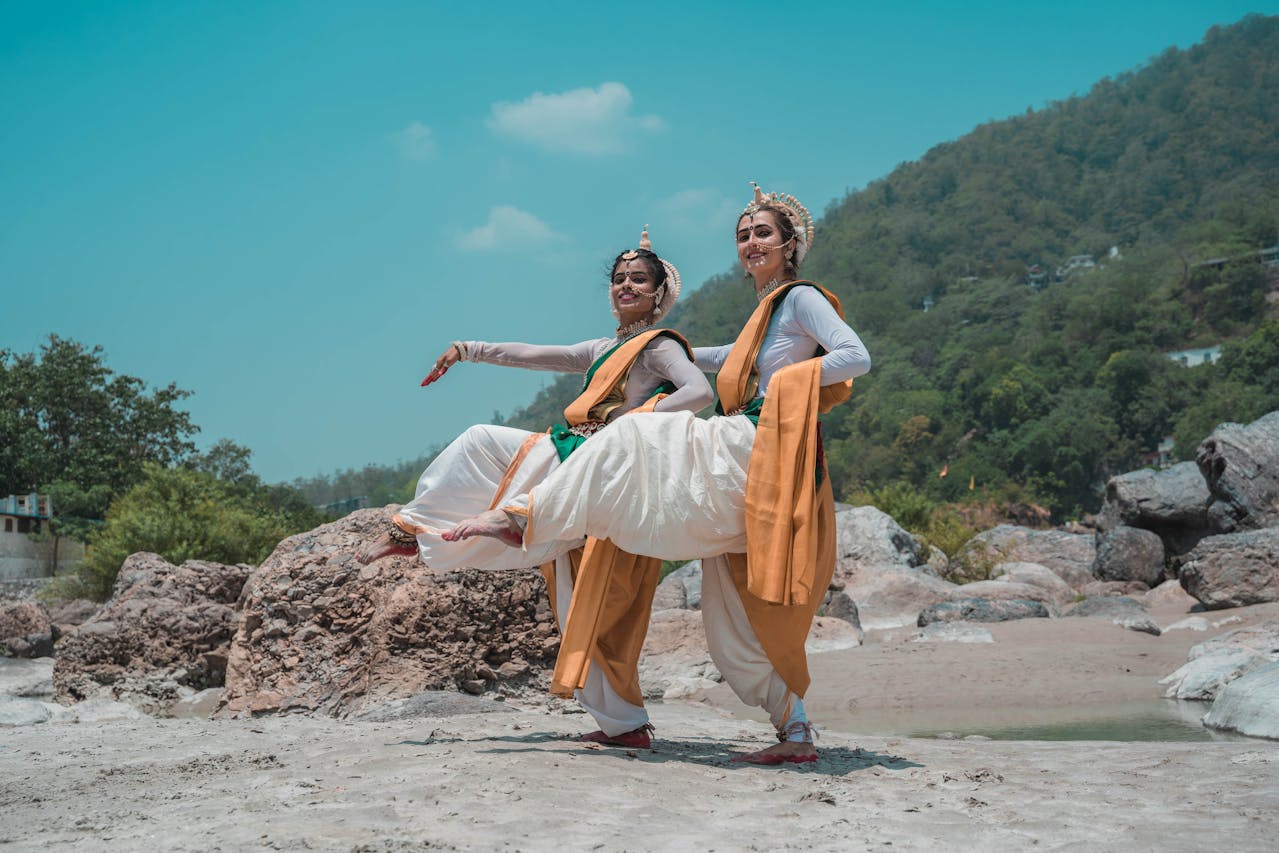
Odissi
Odissi, one of India's oldest classical dance forms, originated in Odisha. It evolved from temple dances, especially in Puri, where dancers performed for Lord Jagannath. Rooted in the Natya Shastra, it flourished during the Ganga dynasty. Revived in the 20th century, it remains a symbol of spiritual and artistic heritage.
Origin Of Poerty
Poetry in India has ancient origins, with the earliest forms found in the Rigveda, composed around 1500 BCE. Early poetry was primarily oral, used in religious rituals, and later evolved into diverse literary forms. Indian poetry is known for its rhythmic and metrical patterns, often linked to music and dance.
Classical Poetry
Classical poetry in India traces its roots to the Vedic period, with the Rigveda being the earliest example. Composed in Sanskrit, it follows strict metrical patterns, with chandas governing verse structure. Notable works like the Mahabharata, Ramayana, and Shakuntala shaped Indian literature. Poets explored themes of devotion, love, and philosophy. Classical poetry also thrived in regional languages like Tamil, with Sangam literature offering vivid depictions of nature and emotions. It played a crucial role in preserving cultural and spiritual heritage.
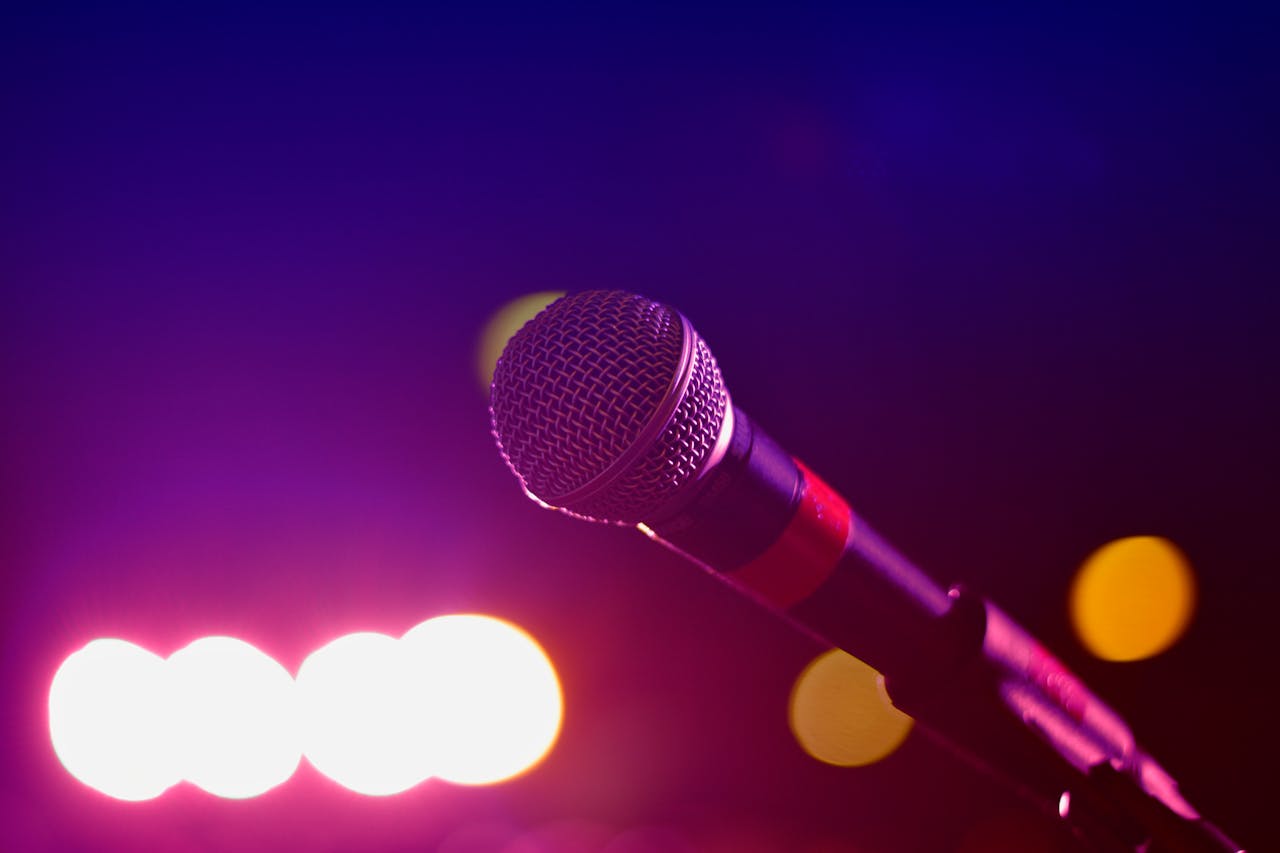

Modern Poetry
Modern poetry in India emerged in the 19th and 20th centuries, reflecting the country's social, political, and cultural changes. Influenced by Western literary movements like Romanticism and Modernism, it broke away from traditional forms, focusing more on free verse and individual expression. Writers in languages like Hindi, Bengali, and Urdu explored themes such as identity, independence, and human struggle. Poets like Rabindranath Tagore, Faiz Ahmed Faiz, and Harivansh Rai Bachchan redefined Indian poetry, combining classical elements with contemporary issues, making it more accessible and resonant with diverse audiences.
Origin and Evolution of Music in India
Music in India dates back to the Vedic period (1500 BCE), where it was part of religious rituals. Over time, it evolved, blending with local traditions into classical, folk, and devotional forms. The Nāṭyaśāstra by Bharata Muni (200 BCE) laid the foundation for classical music, making it a cherished cultural expression.
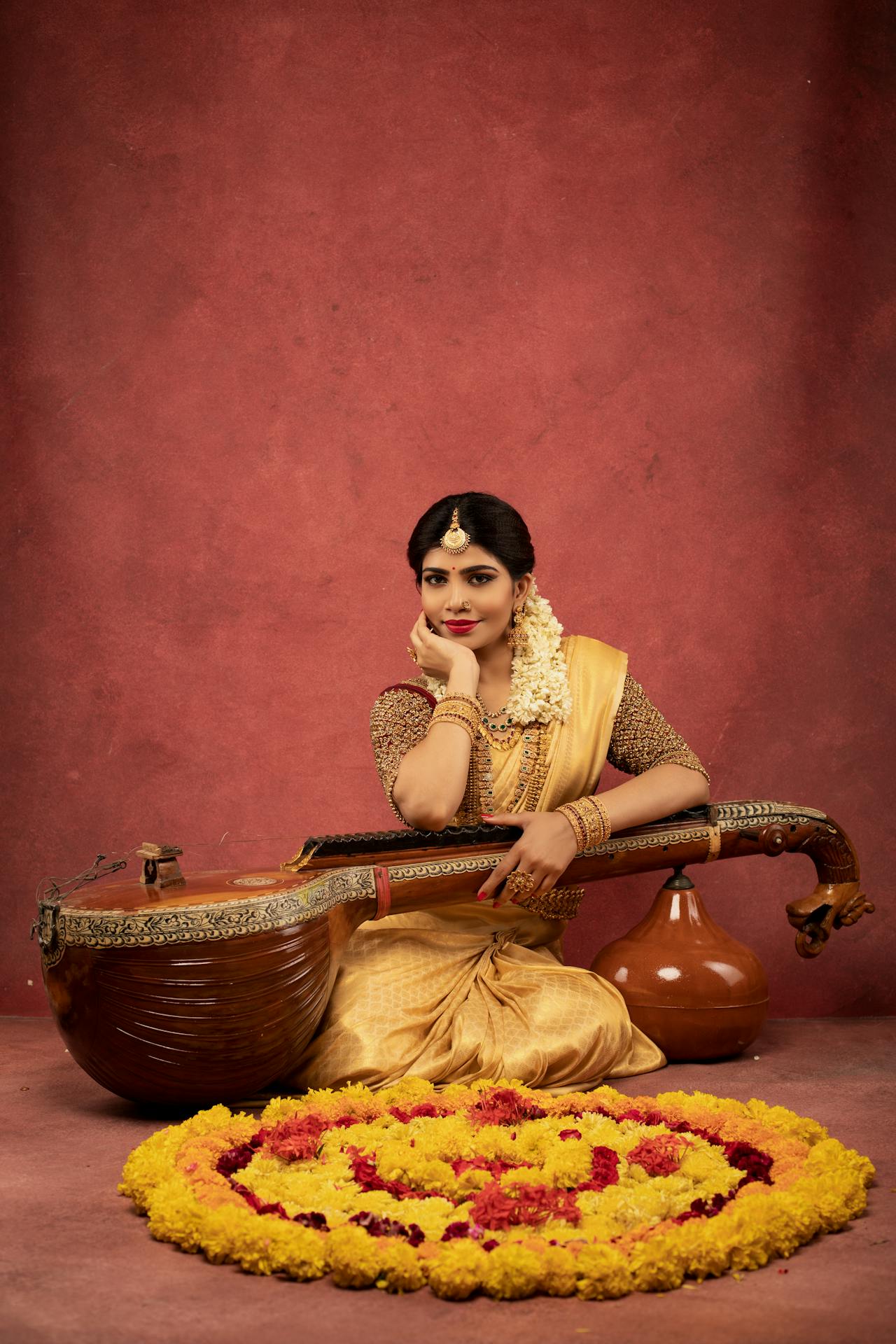
Carnatic Music
Carnatic music, rooted in Southern India, is one of the oldest classical traditions. It emphasizes melody, rhythm, and improvisation. Performances often feature intricate compositions in regional languages, focusing on spiritual themes. The use of instruments like the violin, mridangam, and veena is prominent in Carnatic performances.
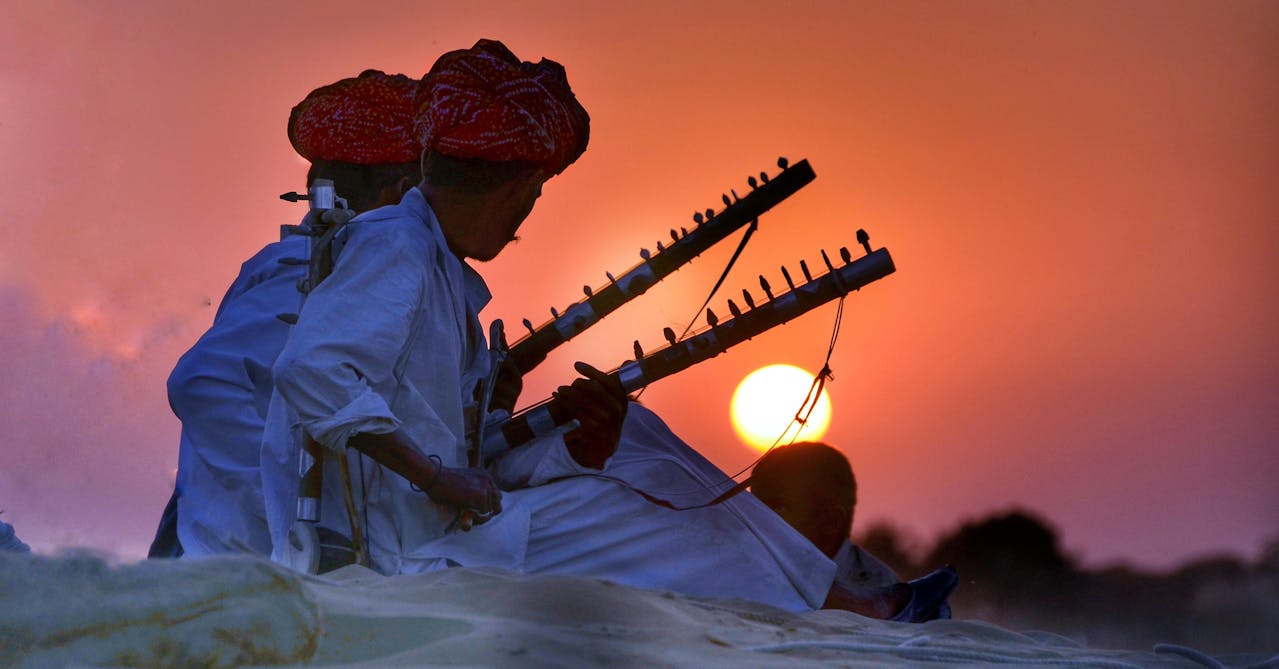
Hindustani Music
Originating from North India, Hindustani music is characterized by ragas and talas. It revolves around improvisation and expression of emotions through melody. The rich history of this music includes traditional instruments like the sitar, tabla, and sarod. Hindustani music is deeply tied to Indian classical dance and spiritual practices.
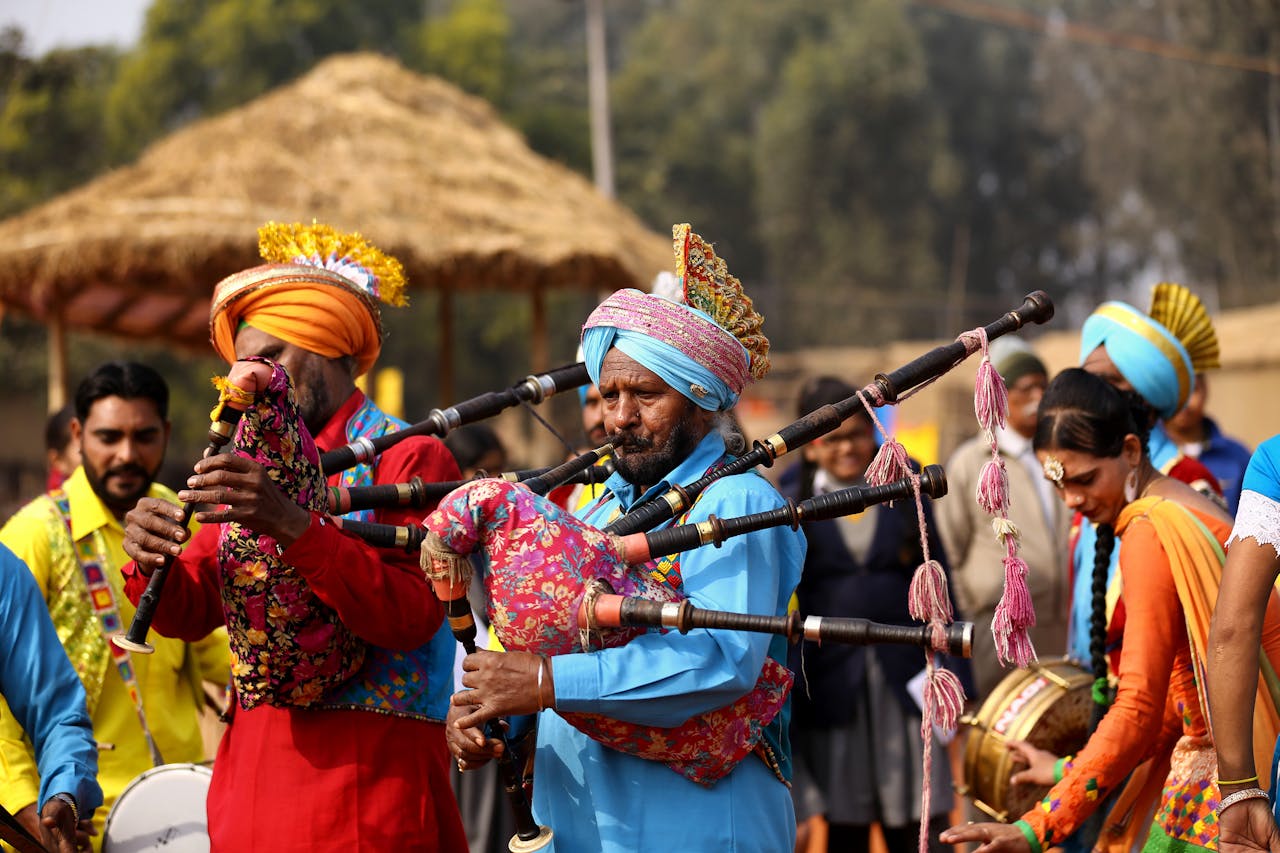
Folk Music
Folk music in India varies by region and community, reflecting the diverse cultural fabric of the country. Songs often tell stories of daily life, love, or regional history, and are performed with traditional instruments like dholak, flute, and harmonium. Folk music brings together local traditions, dance, and rituals across India’s many states.
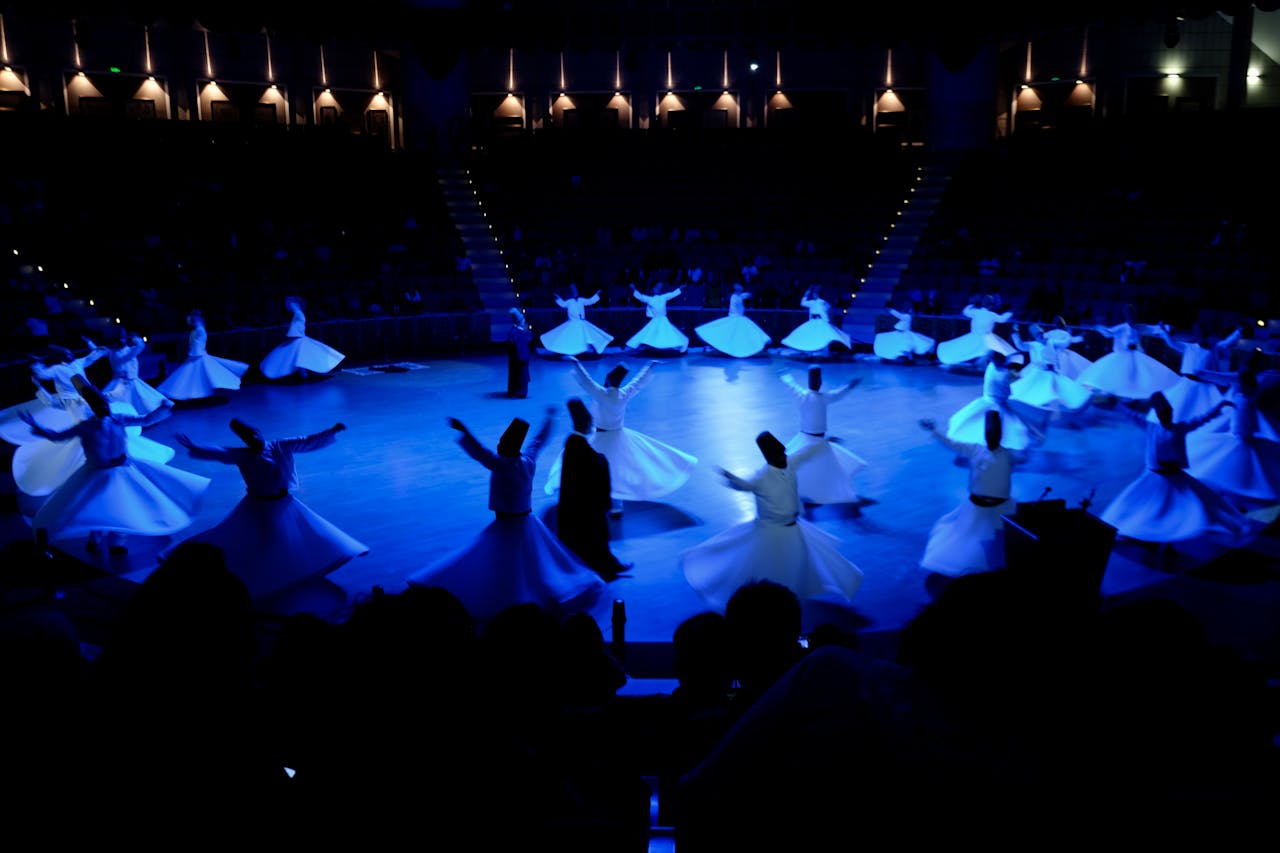
Sufi Music
Sufi music emerged from the mystic traditions of Islam and has become an integral part of Indian culture. It is often performed in Qawwalis, devotional songs that express the longing for divine connection. With instruments like the harmonium and tabla, Sufi music blends Persian, Indian, and Central Asian influences, offering a transcendental experience.
Origin of Indian Musical Instruments
Indian musical instruments have a rich history, dating back to the Vedic period (1500 BCE). Instruments were initially used in religious rituals and temple worship, symbolizing divine sounds. Over time, they evolved and diversified, influencing classical, folk, and devotional music across the country. Ancient scriptures and texts, such as the Nāṭyaśāstra, mention various instruments, which laid the foundation for their development in Indian culture. The fusion of art and spirituality led to the creation of a wide range of instruments used in traditional music today.
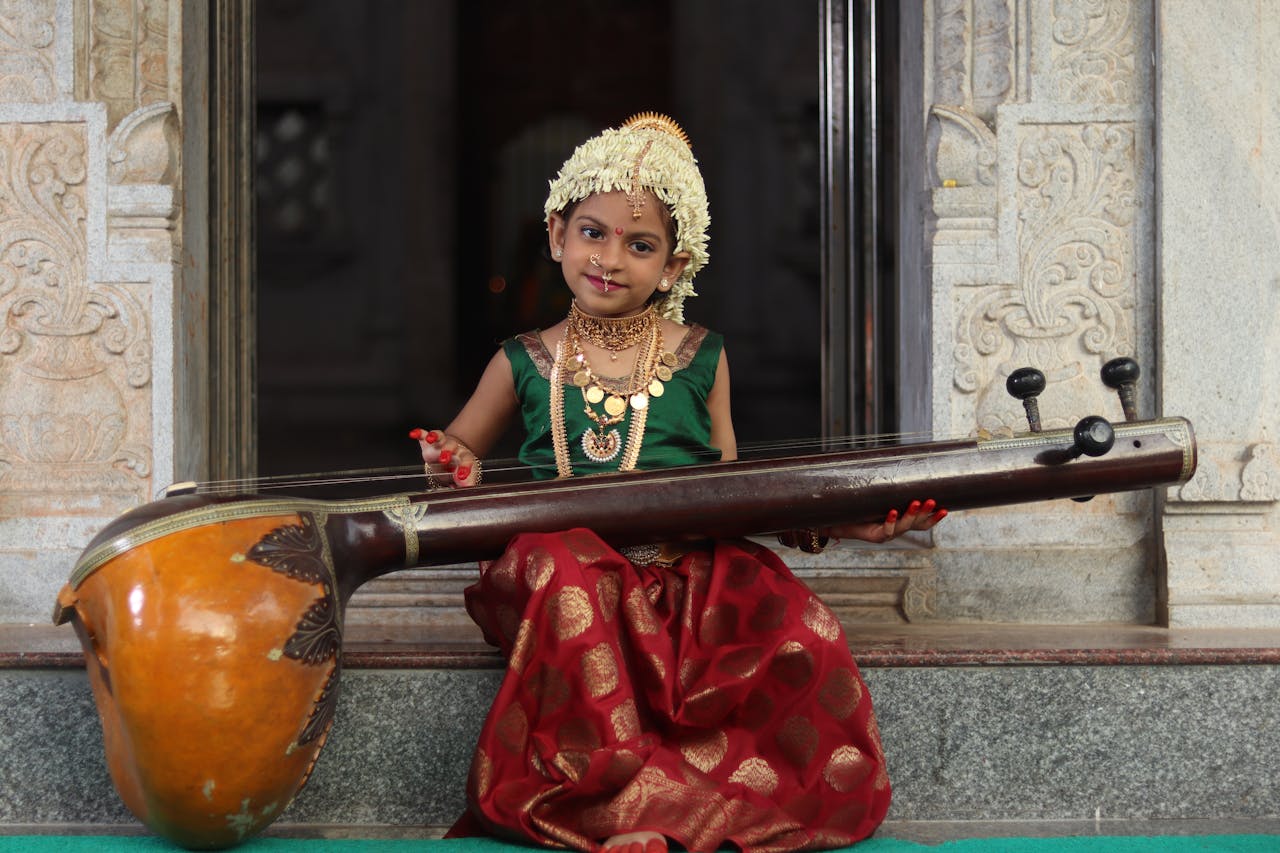
Sitaar
The sitar, a classical Indian string instrument, originated in Persia before being introduced to India in the 13th century. It evolved from the Persian setar, which had three strings, by adding more strings and modifying its structure. The instrument became integral to Indian classical music, especially in Hindustani tradition, gaining prominence in the 16th century under Mughal influence. The sitar's distinctive sound is created by plucking the strings with a plectrum, producing resonating melodies that express deep emotions.
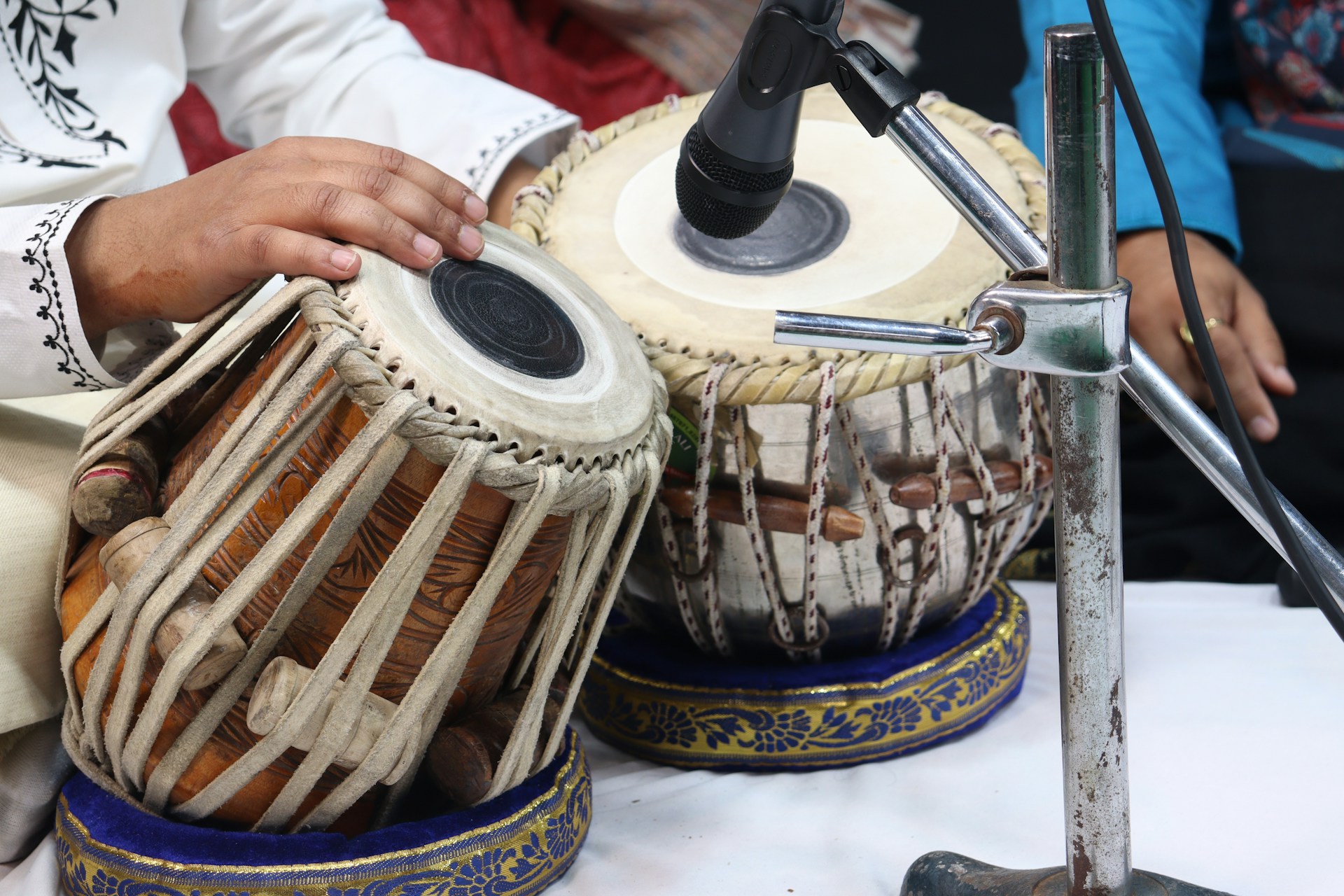
Tabla
The tabla, one of the most iconic percussion instruments of India, has its origins in the Indian subcontinent around the 18th century. It evolved from ancient drums like the pakhawaj. The tabla consists of two hand-played drums, the smaller "dayan" and the larger "bayan." It is central to Hindustani classical music, providing intricate rhythms (talas) and accompanying melodies. The tabla’s distinct sound is produced by striking the drumheads with the fingers and palms, creating complex rhythmic patterns and nuances.
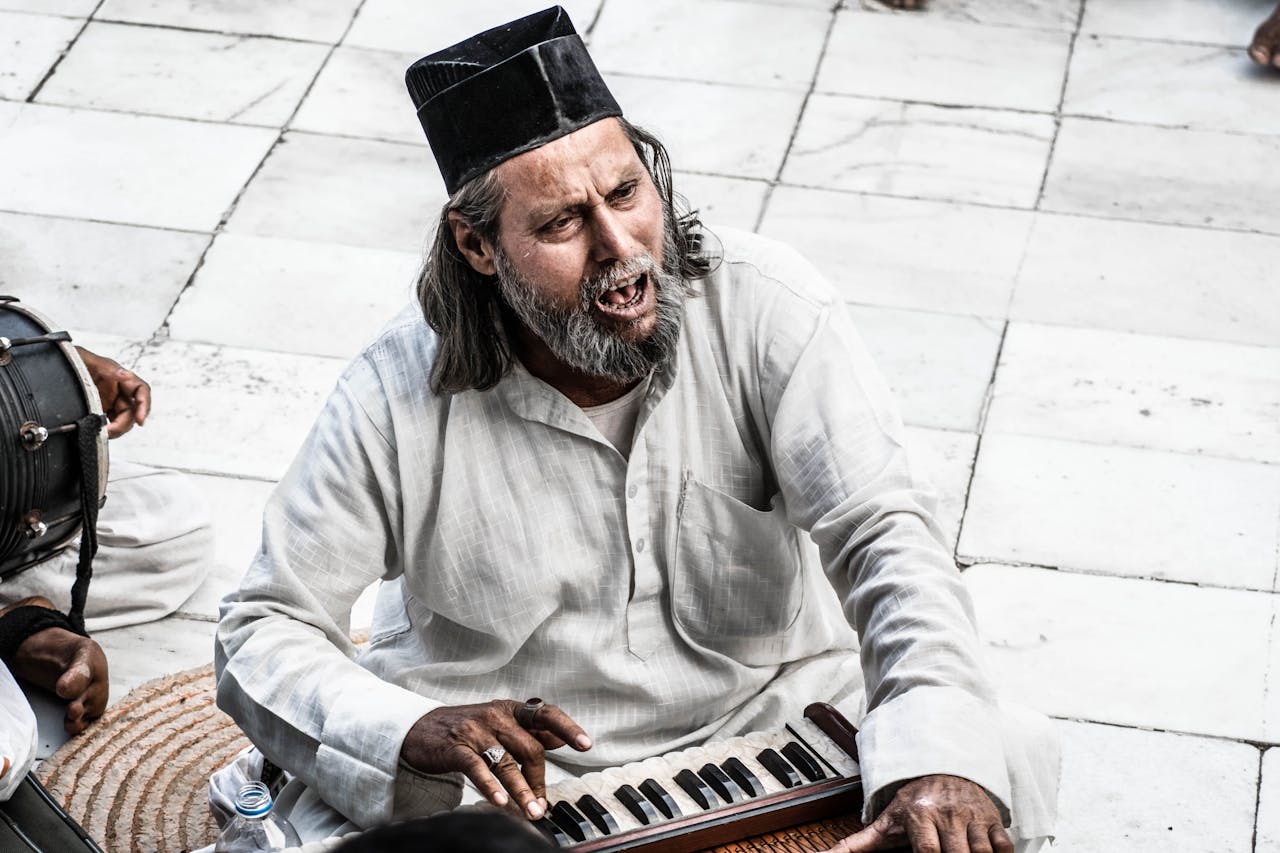
Harmonium
The harmonium, an essential instrument in Indian classical and devotional music, was introduced in India by Western missionaries in the 19th century. It has since become widely used in Indian music, particularly in Sufi and bhajan performances. The harmonium is a portable keyboard instrument that produces sound through air pushed over reeds. Its versatility allows it to create both melodic and harmonic accompaniments. In Sufi music, the harmonium enhances the emotional depth of qawwalis and other devotional songs, providing a rich, resonant foundation for vocal performances.

Flute (Bansuri)
The bansuri, a traditional bamboo flute, has been part of Indian music for centuries. It is believed to have originated in the ancient Vedic era, with references in Hindu mythology. The bansuri is a key instrument in Hindustani classical music, popularized by maestros like Pandit Hariprasad Chaurasia. Its sweet, soothing tone is produced by blowing air across holes in the bamboo, creating melodic and improvisational passages. The bansuri is also prominent in Indian folk music, enhancing the spiritual and emotional depth of performances.
